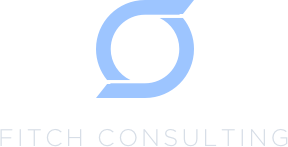
Blog

Improving Employee Retention Strategies: Making the Most of Internal Talent
If your hiring strategy doesn’t include a comprehensive internal mobility component, the time to address it is now.

Upcoming Webinar - Building leaders at all levels: The key to a resilient organization
Creating organizational pathways for people to move up and across organizations can have huge impacts on DEI, retention, and your bottom line. At the same time, very few companies have strategies and programs in place that can do this – or that are working. Building leadership capability at all levels goes beyond formal training – we’re here to talk about how to create a pool of purposeful leaders at your company.

Organizational Purpose and Healthy Workplace Boundaries
Employees today have high expectations about their needs and their boundaries. Engage their expectations in a way that supports your company’s purpose.

Purpose Beyond Profit: Becoming an Exemplary Employer
Purpose driven companies grow faster, expand farther, and change better than others. How does your organization’s purpose contribute to the employee experience?

Creative Collaboration in the Virtual Workspace
Collaboration has its challenges in the virtual working world, but it remains essential to innovation and creative problem-solving. How can you create more opportunities for virtual teamwork?

Creative Team Management: Creating Space for Creative Change
In 2022, the debate over flexible work options vs. return-to-office mandates raised several questions about the types of workplaces best suited to certain types of work — and innovation quickly emerged as a leading point of contention. Arguments run a wide gamut, but put simply: Employers are more likely to believe flexible work stifles innovation, and creative talent frequently, but not always, disagrees.

Purpose: The Discipline Your Organization Needs
Over the last few years, organizations have been subjected to a series of tests. The COVID-19 global pandemic has tested our ability to adjust and adapt. It’s tested our technology, ways of working, the role of the workplace, and so much more. But perhaps more significant has been the spotlight it has shone on the vitality of purpose.

Modern Workplace Solutions: Creating a Positive Work Culture
In what is now known as “traditional” workplace culture, employees reported to the office each day and conducted their work-related tasks in a familiar setting with familiar people. Establishing a healthy company culture may have been a challenge for some organizations, but there was plenty of opportunity for employees to gather, interact, develop working relationships, offer each other support, and participate in on-site training and career development. Things have changed, and organizations are rethinking their approach to fostering positive company cultures.

Intentional Inclusion in the Modern Workplace
Your office may not work much like it did a few short years ago. Today, the employee experience is increasingly recognized as a contributing factor to organizational success, and flexible work models are shifting workplace dynamics and reshuffling priorities for optimal performance and productivity.

Quiet Quitting: Continuing the Conversation
The term “quiet quitting” sparked a cultural phenomenon online, with several social media posts and articles popping up filled with research, insights, and opinions. To some, quiet quitting is about setting boundaries and simply doing the job that you were assigned, without going above and beyond. To others, quiet quitting is about lazy, unmotivated employees taking advantage of the new world of virtual work. There’s also a whole host of other definitions and explanations, with everyone bringing valid concerns to the conversation. Regardless of the intent behind quiet quitting, we know that the term points to some genuine problems for organizations to solve.

Real People in a Virtual World: Social Engagement on Purpose
Interpersonal connection is a critical facet of human society. Relationships allow people to create community and culture as well as function as part of a family, group, or organization. Social capital refers to the collective value of a person’s social networks — and the way these networks interact and work together.

Flexible Work and the EMPLOYER Experience
“Flexible work” means different things to different organizations, but every flexible model stems from one core idea: Employees know when, where, and how they work best.
